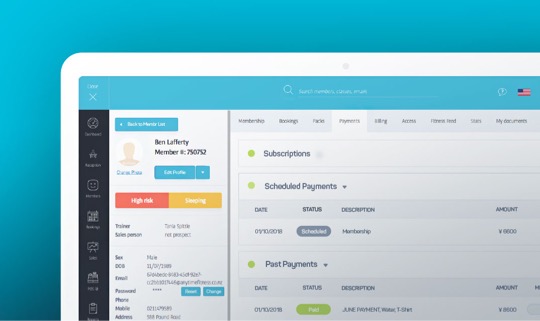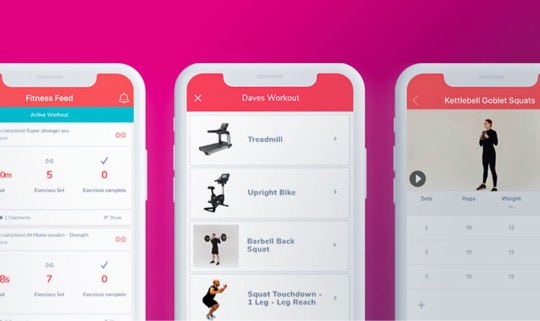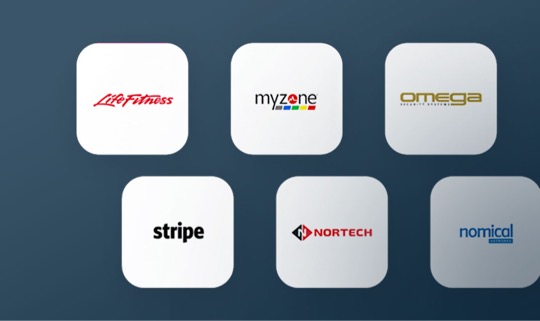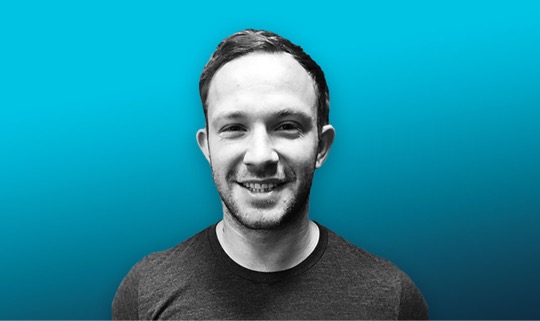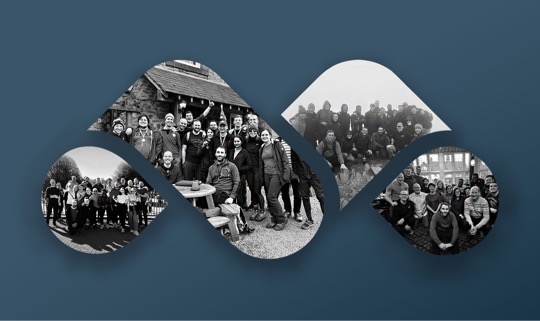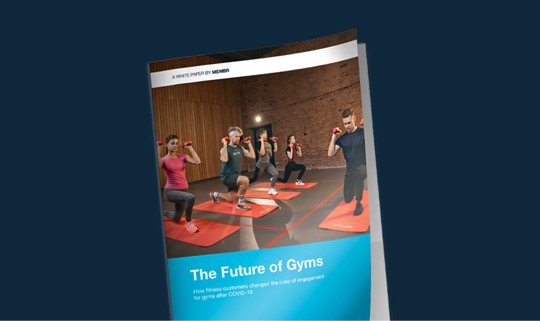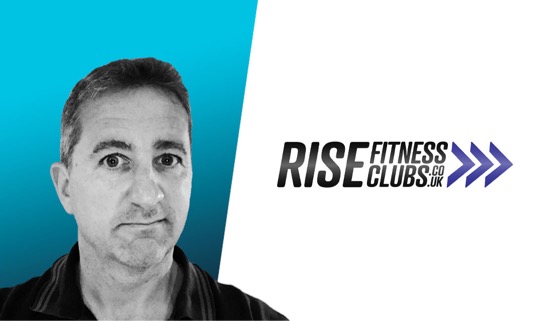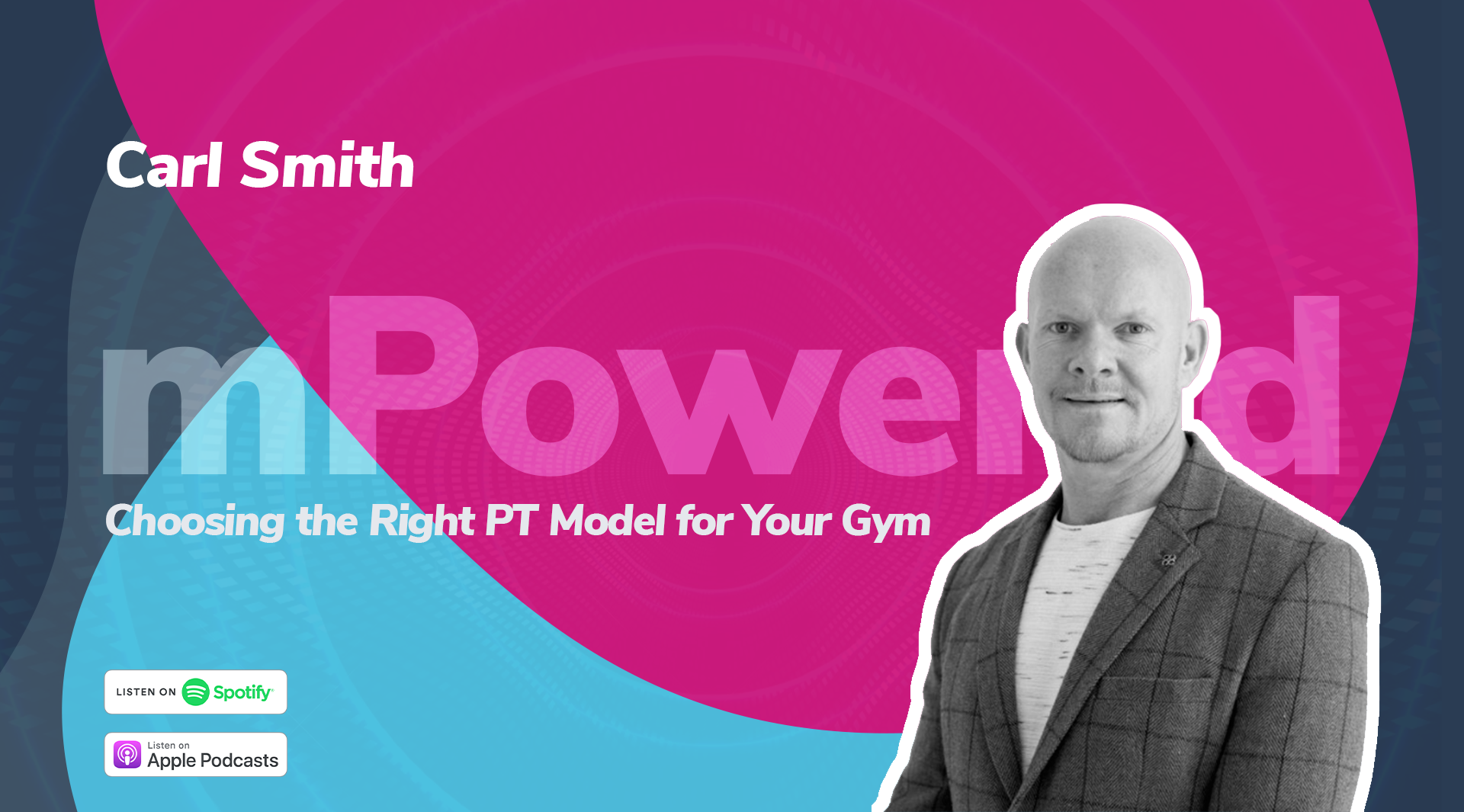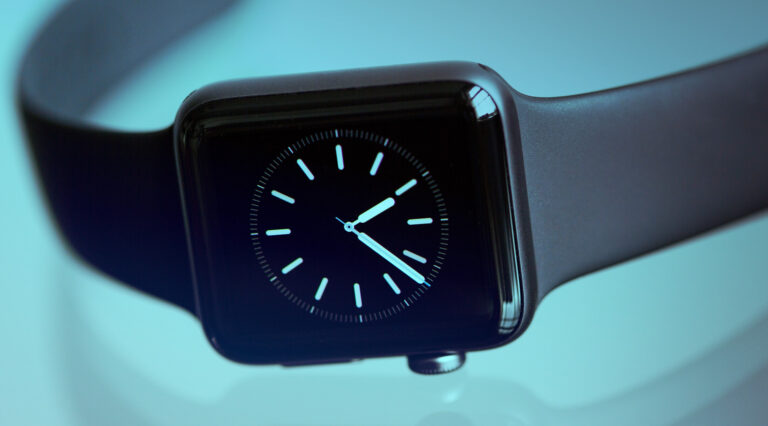Craig McNeill: [00:00:00] Welcome to mPowered. And I’m your co-host Craig McNeill and I’m with Jack Malin for our series of the future of PT. And I’m really glad to say that our guest today is Mr. Carl Smith. How are you, Carl?
Carl Smith: [00:00:13] Good mate. Good mate.
Craig McNeill: [00:00:15] We’ve had a couple of really good episodes, Jack haven’t we with the guys that we’ve spoke to before about the future of PT. And we’ve brought Carl on today to kind of talk about lots of different sides of the industry Carl has got a wealth of knowledge from, an operator side of things in his past presence and is very much involved in PT right now as well.
So it would be good to kind of understand Carl’s experiences, thoughts, and expand it and kind of understanding of how PTs are valued within operators. And also kind of just pick his brains of what he sees, what we can do in the future to improve personal trainers as well.
So looking at your background, you don’t look old enough to have done everything that you’ve done by the way.
Carl Smith: [00:01:03] Bless, not anybody come on to me for a good, good 13 months.
(laughs)
Craig McNeill: [00:01:10] Nice. This is on the first date as well.
So your, your experience is kind of within operations and, and working with Fitness First and Exercise 4 Less, and in Exercise 4 Less, you were very much involved in the PT product so I’d love to find out a little bit more of how that was for you over the eight years that you spent at Exercise 4 Less, sure you’ve got some stories!?
Carl Smith: [00:01:32] Absolutely got some stories and some of them I can share.
Craig McNeill: [00:01:36] But more importantly Carl, you you’re your current business consultant and owner of the Concept Fitness consultancy. So tell us more about, that and what you’re doing at the moment?
Carl Smith: [00:01:46] Yeah. I guess this pun very much intended, but the, the concept was, was borne from my observations within the industry. And, certainly over the last, I want to say sort of six years, it just became increasingly evident that if the average trainer lasts in the industry six months, then there’s a problem.
And you know, from an operator’s perspective, it was, you know, is it, do we do. I’m not about sort of assigning blame, certainly at this stage in the conversation, but is it the responsibility of the training provider to set them up more vocationally? So that, that qualification is it includes sales, it includes marketing, it includes branding. Or is it the responsibility of the operator to deliver all that within a really effective, lengthy potentially, induction process? So that sort of, we solve that problem. And right now, arguably certain, certain companies are doing a little bit and certain training providers are trying to do a little bit, but there’s no resounding answer right now. So, you know, that’s where the, the concept sort of came from that I want to be able to help trainers make their first steps, successful steps. You know, I was actually listening to, the previous podcast with the guys from Pure and from, you know, from what they’re saying, there’s a pretty cool induction process, you know, but that’s great to hear but not every company does and we’ve got, you know, I think off the top of my head and I’m aware of about 540 training providers.
So there’s a lot of personal trainers becoming qualified that aren’t getting that support because you know, if, if PureGym have got it boxed off which is brilliant, not everybody goes to PureGym, so not everybody gets that founding. And then what if you didn’t want to work for a commercial.
What if you want to, you know, go out and start on your own. So if it’s up to the operators and you’re going to start out on your own, then the guys that do that, they’re the ones that are going to fail because the training provider didn’t have the answer either. So there’s just, there’s a necessity for a business like mine and I think there’s a necessity right now for a lot more. And I don’t know what the answer is, but I’m just trying to be part of the solution as opposed to the problem.
Jack Malin: [00:03:51] Awesome. Yeah, I think Nick, and Ant are obviously very proud of what they’ve built with that peer driven support they’ve given to those PTs, but it’s still, they’re still the outliers in that respect aren’t, they compared to the vast majority of, of commercial gyms that just sell you space on the gym floor. And I think within one of the other episodes we talked talked with Aaron and James from, from Your PT. They were kind of discussing the same. They’re trying to, they’re trying to.
Well, they have got the model where you outsource PT management again, because operators don’t necessarily have the skills and expertise and to, to manage and coach and support and give the PTs all the support they need. And it’s very, very clear. Like you say, when, when they come into the industry that that’s, it’s those softer skills around selling around, communicating around kind of business management that they lack, and they have the ability to help someone get fit. The problem is it’s they’re growing a business to help them to do that rather than like we talked about last time around rather than it being a job. So I think it makes complete sense and really exciting what you’re doing at the moment Carl
Carl Smith: [00:04:46] Cheers mate appreciate the support
Craig McNeill: [00:04:49] So, Carl’s interesting fact . Keep it clean.
Carl Smith: [00:04:52] Yeah, this was absolutely the hardest question of the lot I think. But after doing a lot of travel of what, what was really, you said it had to be interesting you didn’t say it had to be useful. But believe it or not, but the that the, the w we managed to put a man on the moon before we managed to put wheels on a suitcase.
We put a man on the moon in 1969, but the patent for wheels on a suitcase didn’t come till 1972.
Jack Malin: [00:05:26] I literally don’t know what to say to that!
Carl Smith: [00:05:27] Well, the amount of traveling I did in my former role, with what, 51 gyms all over the country-
Jack Malin: [00:05:35] You’d have one massive bicep!?
Carl Smith: [00:05:36] I have got one massive bicep!
Jack Malin: [00:05:40] Not for carrying your bag.
Carl Smith: [00:05:42] No.
Craig McNeill: [00:05:44] Great one, love it. So today’s episode, we want to kind of understand, do operators value personal trainers. So Carl what, in your, thoughts, in your opinion, what do operators think about personal training? Is it primary that they’re looking just for a numbers where they charge X amount of pounds for, for rental, from 10 trainers and that’s the revenue or secondary revenue or do they see the bigger picture and do they see that personal training actually helps them with their membership and helps with retention and the whole overall member experience?
Carl Smith: [00:06:21] I’m going to talk from personal experience cos I can’t speak for everybody, but what I have seen is that there, I haven’t been part of any business that has been chasing rent as, as a revenue stream and that being the primary motive for engaging personal trainers rather than employing them to be fair.
The thing is though, as we all know, that if you had 5% member penetration with PT, you’re doing well. And typically certainly from the Exercise 4 Less perspective, we were looking at 1.7 when we measured it on average, so that’s not a massive portion of your membership base.
So if that’s the number that of your members that are being supported by personal training, then they’re not a great retention tool, so to speak, but it’s all of the other stuff, isn’t it, you know, members that pay for PT might be the 1.2 short or 2%, but it’s the other stuff.
And I think from a from a, from a good operator’s perspective they’ll see that. And, and you, and it’s the interaction on the gym floor is probably biggest piece that you can’t really measure. But I know from my own training, if I’m training for you know, if I, if I commit to, to be in the gym for an hour and maybe about half an hour in, I start to lose a bit of motivation, but if somebody comes up and speaks to me for, it could be 20, 30 seconds. For some reason that when they leave, I’m more motivated again for at least another 20 minutes. And I, I stay longer and if I stay longer, I’ll get a better workout. If I get a better workout, I’ll get better results. If I get better results, I’m more likely to stay with that gym because I’m getting results. So I think there’s it’s unfortunate, but it’s the stuff that’s not really measured that is the real sort of benefit that PTs have on your business and look, you know, certainly it, it certainly depends on your modelling.
You know, if you’ve got personal trainers who are are doing some of the housekeeping for you potentially, you know, the tidying the gym, that’s again, it’s un-measured, but it absolutely provides a benefit. Again, you know, I think it has to be part of your, sort of model to. And we’ll talk about this I’m sure.
But yeah. So so what’s the word I’m looking for? I suppose for the PTs to actually do what you, what you’re wanting them to do. Yeah. Any good PT model starts with trying to understand first off, what is it that you want your personal trainers in your business for? And then model, out from there.
If it’s, if it’s to generate revenue, then, then that’s a starting point. And maybe that’s the communication that you should have with your trainer when they start so that, you know, we all know what path we’re we’re following. If that makes any sense.
Craig McNeill: [00:08:50] Yeah, can you, can you give us an example where you’ve helped structure that model where you, you do motivate the trainer to go out and do that, work, which sadly, some trainers see it as well I don’t want to do that free work because I want paid clients. They don’t see the connection between the two.
Carl Smith: [00:09:09] Arguably Craig, why should they. You know, if that’s the, premise of you know, it’s all about how you’re inducted and how you’re coached along that journey. You know, if the expectation is that you do a number of free hours for me, which going forward that’s going to be a thing of the past anyway with, with IR35 but with if you’re doing free hours for me ultimately what am I here for as a personal trainer?
I’m not really here to do free hours. I’m doing those to negotiate a discount on my rent. So I’m doing those to allow me the opportunity to trade in your business, to build a PT business. Actually, my sole purpose as a personal trainer in your business is to generate income for me. Yes, you can coach and you can sell the concept to a trainer that, you know, by doing these free hours and by tidying up the dumbbells you’re going to get an opportunity to talk to somebody by talking to a member about my app. And it’s going to give you an interaction, but we’re trading things off here. And it, it’s not transparent. And it just doesn’t feel right
Jack Malin: [00:10:06] Yeah it’s a, it’s a good point. It’s kind of, I guess, one of the big differences between when you are building a PT model to start with the very big decision as to whether you’re going down an employed or self-employed PT model, because your comment’s fair in terms of why should they do that well, they will only do it if they know that there’s something in it for them, they won’t do it for the greater good, the vast majority of them, I should say, won’t do it for the greater good of the gym. They’ll do it if they see a direct correlation between the amount of people they speak to, to the amount of leads they get, to the amount of taster sessions they deliver to the amount of clients and therefore revenue they get.
Are they looking at putting a self-employed PT model or language could be, which leaves a lot up to chance. Doesn’t it, it leaves a lot up to hoping that PTs see the direct link between gym floor communication and clients, and therefore do it. Or they go down the route of a, an employee PT model where they can start to stipulate exactly what the trainers do and because I think your point earlier in the call is really valid. One it’s the, it’s the non-tangible things that in theory can be so much more beneficial to operators than just the, 2% or some people might say they get as high as six or seven, but it’s very unlikely to be any higher than that.
The people that take one-to-one PT, I think setting up those, those employed PT business models will allow them to actually say right. Okay. We want you on the gym floor I’m not just speaking with your mates, but having conversations about that. You were talking about earlier, Carl, when you speak to them for 20 seconds and give them that motivation to stay longer, to work out harder.
And it’s a big decision for operators because it comes with, it comes with a lot more investment, it comes with a lot more support, it comes with a lot more capital in many cases, whilst often the self-employed PT route is the, easier of the models to implement.
Carl Smith: [00:11:50] A hundred percent. Yeah. that’s exactly that the balance and that the goal if you like that PT model’s all about right now, really from my experience, it was about achieving a cost- neutral position where you’re you’re, you’re effectively, your employment costs are balanced out with your rental income and whether you’re doing it with, with rental or whether you’re employing your PTs and then your PTs are then selling PT and, you then try to balance off the revenue that they generate against the employment cost.
So again it’s all about this sort of, it becomes a business within a business. And, and arguably it sometimes becomes too much of a focus for a business because in the grand scheme of things a fitness business has a much more reliable income stream in member dues than it does focusing on this, this secondary spend employment cost balance. And that certainly for us at Excercise 4 Less, when we were running the employed PT model, it took up a lot of resource a lot of resource from, from a head office perspective in terms of the support, the drive, the management.
And then at a club level, you’ve got your general manager who effectively has another four to seven people they have to manage on a daily basis for an outcome. So you’ve got your, your membership team and your PT team selling and, and I’m not sure that that’s the, the way to go either because then effectively, almost your entire team are in the building to sell something to your members and often that that can can be a massive sort of downfall in terms of that member experience that we’re after. Cause not every member wants selling to every time they go in the gym.
Jack Malin: [00:13:20] Absolutely. So I’d wrongly assumed the X4L PT model was purely self-employed. Did you have, did you have both, do you have a self-employed-
Carl Smith: [00:13:27] Yeah! At club number 47, we were a self-employed model. And that, that model wasn’t too dissimilar than the old sort of Fitness First model which was you had a, sort of an incremental increase in rent as you reduced your service hours, if you will. The difference for us I suppose was, there was no, there was no push in terms of time frame. So where, what the scheme I was familiar with is at Fitness First was that you had the first month was free. The second month was, 36 pounds or something and you had hours that reduced as you, got to what month and number 4 and you were paying full rent and you had no hours. The difference with our scheme was that you chose the hours and the, the rental option that suited you the best. And when you were ready, you moved up, you basically dropped you hours when you start to build clients, which I liked that I was really attracted to that, that model when I first started and found that really quite easy to position to new PTs because the decision was theirs.
I personally think that we retained our PTs better. Because there was no real drive. Yes. I I encouraged them up the ladder by looking at their senior PT in a, you know, a sexier t-shirt at the top level, so to speak, but that seemed to work pretty well.
But then we, we had this idea that I suppose we were thinking that we’re a bit ahead of our time, is that The trading hours for rent w was, it was going to be a thing of the past. We visited a bunch of gyms in, in New York and almost those guys were, were laughing at us saying, why are you still running a self-employed PT model?
You know, they, they were all employed in the, in the States at that time. And so we, came back and the guys put together this model, but we were, we were learning we’re trying to try to make things work as we were, as we were learning and we didn’t get it right. You know, in all honesty, we didn’t pay enough I don’t think initially the commission structure that we put in place wasn’t, enough to motivate people and we made a bunch of mistakes. And then over time, you know, I’d spent probably three or four years trying to make that model work. And I think off the top of my head, probably the final three months of running that model, we’d finally got it to making a small loss as opposed to the hole that it was sort of creating because of lack of revenue that was being generated versus the the employment costs and that kind of model pushes you in all sorts of different directions. You know, you talked about having 10 PTs on the gym floor? That’s kind of the Utopia, I suppose, of, PT, where you’ve got all these experts looking after your members or, you know motivated to want to follow the company ethos, et cetera. We were in an employed world. We ended up having to balance the, volume of PTs down to about three, because that’s all we could afford with the revenue that was coming in. So it just wasn’t working. So I think within probably the last two years of me working at Exercise 4 Less we reverted back to a self-employed model. Went down with the PTs, interestingly enough, really quite well. But the balance is trying to you’re trying to source your service hours because you don’t want to lose the ability to deliver an induction. You don’t want to lose the ability to I suppose be able to have an element of control, which, which sounds, bad, but from a management perspective, you, you, you want to be able to have an element of control over your staff and a self-employed PT isn’t a member of staff they’re effectively a tenant in your business. So the modeling really was around, how can we afford to do that in the right kind of way? So, where my head’s still at is that I think, I think you should employ people to do your coach hours, and I think you should have personal trainers as the opportunity for but the ones that can see the opportunity to, to make great money doing something they really enjoy. But actually you need to be entrepreneurial in terms of your mindset. You need to have, you know, a lot of learning behind you. And I don’t mean your level three and I don’t mean that, that the next couple of courses, I think, you know, I know I can rap, but you know, they say 10,000 hours to, to create an expert. Well, well, that, that sort of 10 years worth of learning for most people. And I’m not suggesting that either, but you have to have a balance of being an expert in a particular field.
Being driven, being self-motivated. And that’s, that’s the personal trainer, I think at the minute, the industry expects personal trainers to be that way. And they’re not because the path isn’t particularly clear from completing your level three, how to become an expert. So in closing, I suppose, I think the, the models that, that will start to really retain their team and get that element of control that you want over your staff, you have to employ somebody to do what you want a coach to do, and you need to have a PT. A self-employed model that runs alongside so that you’re giving people an opportunity to grow, because I think that’s the next step. I think a coach comes into the business, learns the ropes, and then becomes a PT.
Jack Malin: [00:18:03] It’s interesting, it’s something that James and Aaron were talking about from Your PT, which they were kind of titling as a kind of hybrid model where they’re helping operator’s setup a model where your employed for your coaching hours and then fully self-employed for you for your PT. And I assumed that they were different people, that they were doing that for, so they were supporting some fitness instructors and then having self-employed PTs, but it was actually the same people wearing different hats. And they said, they’re getting quite good success with that at the moment. And the PTs are getting that secure and stable income albeit not for full time but maybe 10, 15, 20 hours a week. And then they’re getting the uncapped potential of self-employed PT, which comes with risk, but it also comes with high reward.
Carl Smith: [00:18:45] Yeah, what you’ve done there make the old model compliant the old model where you, well, the towers for free, and traded that against no rent effectively or, or so I’ll do for example, I’ll do 15 hours on the gym floor. And I won’t pay any rent. Now, what the hybrid model suggests is that I’m going to pay you for those hours, but you gonna have to pay all back in rent, so it’s the same model. So it’s quite an attractive proposition because arguably it’s what some trainers and a lot of trainers are used to because it was how things used to work.
But it, it still means that for an element of time, I’m not going to make any money. So you still have to have that sort of you know, entrepreneurial mindset, I suppose, and all those skills that we’ve just talked about. Otherwise we’re in the same position that the average PT still will only last six months.
I would have hoped that in that modelling that an operator would see the value of employing two coaches that that do just that coach employed for, you know, for maybe a full-time role so that they they provide that length of service, because that’s the other bit of feedback as needed that your members always give you, is that, Oh, your personal training team turnover too often.
And I don’t really, and that, that might be one of the reasons why PT penetration isn’t isn’t as high as it could be because members don’t trust that that PT will be here in three months time. So I invest, dunno.
Jack Malin: [00:20:06] Yep, absolutely. You’re right. It has been driven by kind of IR35 and it is kind of, like you say compliance way of how it used to be.
But that worked for a significant amount of time didn’t it the old way. And I say the old way, it’s almost like the midway I think PT was traditionally fully self employed like we say about the Fitness First model. Then it went to this exchange your time for rent. And then it’s kind of having to morph now into an IR35-compliant version of it.
But that middle, that middle step is very attractive to new PTs because they’ve got loads of time. They’ve got no money. They’ve got no business, but they’ve got time and exchange their time in lieu of rent is it is attractive to them. And I think the-, I worked at Fitness First for a while and, we always found with that model that you, that you walked us through earlier, the drop off it, as soon as you get to full rent, that was that, hit you in the face like a, like a truck moment where they’re suddenly paying out a hundred, hundred 50 quid a week and never got no nowhere near as many clients as they thought they were going to get by that point. But the drop-off prior to that with minimal, the drop off at that point was, was huge. Whilst if you keep doing a model, like you were saying earlier, where they choose when they go up, it gives them that flexibility isn’t it for it to see a light at the end of the tunnel to see it’s gonna be successful, but not that hard stop day to- if it doesn’t work in two months, you’re out, you’re out the door.
Carl Smith: [00:21:23] Yeah, yeah. A hundred percent. So yeah. I mean, there’s absolute value in it. Don’t get me wrong. I mean, That’s the model that we were working on with Exercise 4 Less prior to me leaving, that was almost the best option at the time because ultimately I always, see things through the personal trainer’s eyes, because one, I’m still personal training. I’ve I’ve gone back and started to run my own boot camp up. And I’m starting to do some, some one-to-one again, and I’m quite enjoying it.
But I always sort of see things from, from their perspective. And I would hoped that the there would have been a model that that, that had an employed post and that was an entirely different person. But, but ultimately that that’s gonna burden the business with an another, another cost that when, depending on the size of your business, when you extrapolate that over 51, you know, Pure Gym, you know, two, 300 sites, that’s a lot of money.
And, the only way to get that money back in, this world is to, offset it against the full rent that comes in and therefore you would need a certain amount of trainers who would come off the hour so that you weren’t balancing your cost there. The other thing with that hybrid model by the way, is that you have to charge quite a lot of rent to really balance the cost because I’m still employing somebody over 12 hours it is more than 500 pounds, which is sort of the average rent up and down the country.
Jack Malin: [00:22:41] Yeah. it’s really interesting to hear you talk about employed PT and I guess for our listeners and for ourselves it’s quite often more beneficial to hear what didn’t work for people and to learn off each other’s mistakes than it is to learn sometimes what did go particularly well, so if you were, if you were kind of having your time again and you guys went to New York, you went around employed gyms.
You probably went out on the beers until three o’clock in the morning and went to the gyms for half an hour in the morning. But if you’re havng your time again and looking at setting up an employed PT model, Well, first of all, would, would you do it again and think that it didn’t work because you didn’t deliver it in this, in the way you would, or actually do you think fundamentally having that kind of self-employed entrepreneurial spirit on the gym floor is the way that you would go having your time all over again?
Carl Smith: [00:23:24] Hindsight’s an amazing thing, isn’t it? It’s a good question. I think the one thing that we didn’t try which I’m still hanging on to, because I do think that this would have worked is that the model in my head, as a personal trainer, you’re going to this business because you like helping people, you like training, typically you like being in the gym or gym environment.
Typically also what you, don’t like doing, or what you certainly don’t know about necessarily is how to sell. So, rather than leave the PTs to sell PT and in an employed model, in my opinion, and that’s all it is, we should have a sales manager, a PT sales manager who sells PT on behalf of the employed PTs and the employed PTs effectively get paid a commission on the retention of the clients that are placed with them by the sales manager.
And that could well be one person that could be a you know a full-time post that that individual, is responsible for booking everybody in for induction or you know, if you’ve got a PT intro pack, then make the book them in for the PT intro pack. Whatever that is, they’re KPI’d on, selling.
They get a commission on the front end of the sale, for example. So, their job is literally to, pack out their PTs. And you can, you can fetch a team up and down based on the level of interest that you generate, and that will depend on your membership base, et cetera. So in a, in a back way, I suppose, ultimately you’re only really paying For what you need, you paying for the, the demand that’s there.
And you’ve got a sales specialist doing, doing the sales. The PT gets to enjoy their job, does an extremely good job in terms of delivering great service, then that, that member ultimately pays again. And that’s when the PT starts to get their commission, and I think that model has legs. Because the real plus for me as a personal trainer coming into that model is I don’t have to sell because a lot the guys don’t have to go through the learning you know, learning 1) I suppose whether you can take the process in, and then two, whether you’re comfortable doing it.
What I really want to do is just help people. And ultimately when when a PT gets a comfortable base of maybe 15 to 20 clients then you live off referrals. And that sort of is when that, that PT business is almost self-sufficient. So in hindsight, I’d have done that.
Craig McNeill: [00:25:37] Yeah, that is the bomb, isn’t it? Because let’s look at it from a member’s point of view it’s always, absolutely blown my mind that there’s multiple transactions that a member does. So there’s a transaction for the membership. Then there’s a transaction on the gym floor I felt a little bit seedy when I was at PT and getting cash in an envelope.
Let’s be honest and that multi transaction and it just causes barriers all over the place. And actually what you just mentioned there and what you’ve just highlighted the fact that the operator, the sales team, what you just mentioned there would actually. Do that job and actually that transaction could just be embedded into the monthly reoccurring fees.
Jack Malin: [00:26:23] Definitely. And I think the, Carl, you mentioned it earlier, but you, you add in the fact that members often have the perception that PTs won’t be here for very long, because the churn is so high handing over wads of cash for the blocks of sessions to someone who you’re not totally confident is going to be here next month is another reason why selling PT on the gym floor is so difficult. I think if we can, if we get to a uniformed approach where the gym is selling PT, and the PT delivers it. Like, I think that is, that’s a phenomenal model for the operators as well.
They’re very much able to kind of control the experience that someone gets when they join, the journey they go on as a member. And then you drive the kind of like you, to use your phrase earlier, the kind of non-tangible benefits that come with personal training. you’re really in control And it’s, it’s, it’s a subtle change. Isn’t it? It’s not kind of night and day from the model you talked about that you said wasn’t successful and something that we all that gets us really excited, but it’s, but it’s a subtle change that I think would make a big impact.
Carl Smith: [00:27:23] Just a staffing structure I think it could be an extension of the sales team. What you don’t want to do is get in the way of the you know, the, the membership and potentially the salesperson holding, you know, the higher value package and not making the sale. So maybe it is a secondary piece, but you know, that role in, some of the gyms was sort of member concierge you know, so it’s a real soft named role because it’s all about service so about experience and that person then becomes the expert on the dance floor so to speak, he knows the members, he knows whoever signed you know, training to, he knows how they take, how they behave. And ultimately you then haven’t had a member experience, which, you know, I’ve listened to some of the previous podcasts that you guys have done and I think you’re right. I think that there are lots of gyms that maybe think they’ve got an experience, but they really don’t.
Craig McNeill: [00:28:12] Yeah. Yeah, and my first question two hours ago was about w do you operate the personal training as a primary source for secondary revenue?
Kind of, I want to change that now and do operators see personal training as a primary experience and the answer’s probably no, because of what, you know, what we just talked about there, and it’s kind of a, it’s just a separated concept isn’t it where the members kind of possibly go through an induction process with an employed instructor.
And then if we’ve got six amazing personal trainers at the time, they will go out and get the clients. But if we’ve got six, okay, PTs we’re going to get less PT penetration.
Jack Malin: [00:28:56] And it’s also, when you talk about member experience and the PT model, it’s also going to be about the consistency of the experience as well.
You don’t, and that’s what you definitely don’t get with a self-employed PT model. You might get a couple of people- we’ve all seen ’em right? You’ve got the I’ll mention him by name Craig, you know, Kev o’Day, for example at your PT? Probably the best PT personality I’ve ever met.
Great, great. I mean, he’s just a genuinely good bloke, but, but always a hundred percent kind of energy, happy, out there to support people, knows everyone by first name. And he built a PT business off that. And then you compare them to, I won’t name them, but you, you compare them to people that we’ve all seen in the past who’ve got masters degrees in sports science from Loughborough or Bath, but don’t know how to communicate and don’t know how to grow a business that sits in the corner of the gym floor because they’re intimidated by it. But have actually got a huge amount of knowledge.
It’s that inconsistency with the experience I think that makes self-employed PT models difficult still to, to kind of justify them. Other than they’re the easy option, they can, you can get PTs onto the gym floor, but there’s just a lot of, a lot of, there’s a big gamble, I guess that goes into who you’re gonna get at that
Carl Smith: [00:30:05] There does and you imagine that in an employed world that, that guy that you won’t name he’s probably a fantastic PT when you put him with a member, he’s just too shy to, to, to make the first move, so to speak. You know, he needs looking after, he’s got that time and money on it, on his, on his skill set.
All he’s missing is, is a skill that potentially is not within his grasp because it’s not his personality. So we, we let him fail in a self-employed world where in an employed world, he could be really successful.
Jack Malin: [00:30:35] And it’s ultimately not why he got into the industry. You’re going into industry for a, for a love of sport maybe or sports science or, or fitness it’s they didn’t come into the industry to be a salesman.
And that is a challenge. We don’t the industry doesn’t look after that, that sort of persona of PT as it were, that kind of really intellectual, very good, like you say, will probably get you better results in in the model you’ve talked about there would probably be your best PT because you can just be about delivery. Can be about results, can be about kind of the person rather than selling and your personality.
Carl Smith: [00:31:08] Yeah. And tracking and detail, you know, I’m, the personality so to speak. And, but yeah, when I train people, it’s more about motivating them and keeping them excited, et cetera, where, you know, and I’d argue that doesn’t make me the best PT, better PT than me is the he’s the person that tracks all my measurements, tracks all the detail, tracks the amount of sets that I manage and knows next time how many reps I should be going for, and you know, what heart rate I was was at at various point, et cetera, that kind of detail is that guy that we’re, we’re forgetting right now in our, in our model. And he’s like you say, he’s probably the best PT out of all of us right now.
Jack Malin: [00:31:43] For sure. So yeah Carl, I mean, it’s really interesting, I guess, to say the journey that you’ve, that you’ve been on with, with X4L where you’ve gone from the self-employed kind of, I guess, starting at Fitness First, the traditional model, then the run for hours model, then the, employed and then back to self-employed I guess well, we talked about in one of the blogs earlier in the month was, is I guess, what does success really look like for a PT model? And in some respects, it’s always seen as as pound notes right and we say how much does, how much revenue does the PT model make?
Or sometimes it’s the goal is to get it to be cost neutral, but it’s, we tend as an industry to pick the kind of tangible things we can hang our hat on to decide what success is. With PT in the future should we think more broadly Around what the goal of the PT model is?
Is it, is it length of stay? Is it total membership numbers? Is it, is it social membership dues? Is it the number of members we’ve interacted with? And I think that starts to really change your mindset as to what route we should be going down with the painting model.
Carl Smith: [00:32:42] Yeah, I could, I could answer that really quickly by just saying yes!
We do potentially stitch ourselves up with measuring only income, or cost versus income if you have, if you like. When in reality it’s the stuff we don’t measure that we’ve discussed initially, that is the almost unseen benefit of, of, of having personal trainers in your business. So maybe there’s a way to quantify that, to measure that, to understand that actually there’s a value there.
And if there is a value, then ultimately there will be a cost. And so if your goal is to be cost neutral, for example, maybe that’s, maybe that’s not the way to approach it, because actually to, to get that member experience, to get a level of service it’s going to cost something. And, and you’re gonna have to budget for that because it’s worth it.
And that, that makes the whole piece, just that, that little bit more palatable, I suppose. And, and achievable rather than chasing, chasing your tail on, on income versus cost. So, so yeah, I suppose in short, I think there’s an absolute value in having personal trainers that we don’t measure.
And a successful model going forward will be able to do that.
Jack Malin: [00:33:44] Yeah. And it, and it’s almost kind of, we talked about it before, like aligning the goals of the three parties, being the member, the trainer, the, operator, and we, we mentioned it on the previous podcast, but if those three groups wrote their goals on that, that’d be very different.
And. If, if you start to kind of align the goals, you start to say, right. Okay. Actually that the real result here is if we can increase total membership number by 10%, or we can increase length of stay from six months to eight months, it far outweighs any revenue that the gyms will make from from personal training and completely shifts the focus.
And I think the challenge with that sometimes it is really hard to quantify and sometimes it takes a while to quantify and very few operators have really made that leap. And the, kind of the leap you guys made from self-employed into employed. That that is a big jump and very few have done it.
Carl Smith: [00:34:38] And I suppose that the bigger the company, the harder that is to shift because you’re not, turning you know a sail boat.
You’re turning a cruise liner. So much more difficult to do. And when the numbers are that far bigger, it takes some some more balls to make that change.
Craig McNeill: [00:34:53] Absolutely. And it comes back to the why doesn’t it Carl that’s really, really important.
that needs to be solid and it’s going to be tested at some points and the more solid it is, the more, the more it sticks and the more it will stick around.
Carl. Just I’ve been having a bit of a stalk, which I mentioned before we were recording – I’ve er, chatted you up. I’ve been stalking you. What are you erm (laughs) so how are you enjoying PT at the moment then? So after, after years of, of watching hundreds of PTs and helping PTs, what’s it like going back to the old PT world?
Carl Smith: [00:35:28] Do you know? It’s, it’s why I got into this in the first place. And it’s, it’s been really refreshing and enlightening I think but it’s been really good to test my knowledge and to, I guess, to test me, you know, my, clients now I’ve been created a an eight week challenge product, which, effectively is a, it, well, it was going to be an outdoor boot camp. And then obviously things changed. So it became a Zoom boot camp, which really helped me I suppose, one get in touch with my PT clients to understand from their perspective, how you’ve got to sort of learn to adapt things, but also how much more convenient that is.
And this is probably a whole nother conversation, but, you know, do we, when we come out with lock down, do we learn from the last 13 months? Or do we literally go back to doing what we used to? And I think that the smart ones will have picked up a lot of new skills and the word hybrid has been thrown around in all sorts of different guises at the minute.
And for, for me that, that, that hybrid model now of PT, put it this way, I’m going to continue running my boot camp in it’s current guise, not going to change anything because it works really well. You know, I’ve got one girl now that’s lost a stone. I’ve got a number of clients that are now up to six, seven, eight pounds.
You know, and that, for me, one proves to me that, yeah, the stuff I’m talking about works and fills me with confidence, but ultimately it’s convenience for my clients now. And it’s a, it’s a model. So, you know, I think you know, moving forward, I think that there’d be a lot more of this and that’s, really good but from how I’m sort of enjoying and the purpose of it is it’s learning sort of helped me with the next sort of venture, I suppose, which.
I was approached a few weeks ago by by the by the guys that run Your Zone 45, who are looking to franchise a new model called Rise. And they wanted somebody to help them out with their product. And so. Interestingly, all the stuff that I’ve been doing over the last sort of 13 months just started to make sense.
And you know, in the next couple of weeks, we’ll have a product available as a franchise opportunity for a personal trainer to be able to purchase a product effectively, it’s an off the shelf outdoor experience product that hopefully answers a bunch of questions. So.
Jack Malin: [00:37:39] And that’s, that’s just one of the really interesting parts of the items in the pandemic, I guess, is, is how this all flushes out at the end.
You going to end up now with like, say like, like Rise, creating outdoor outdoor franchise models. that PTs can take, your gonna have PTs doing a combination of, of digital and in club, you’re going to do some PTs that go purely digital. The one way that consumers can access exercise is going to be fundamentally changed after this all washes out and that can only be positive. You can only, you can only think that that has more people that can access exercise that therefore get into exercise to get results rather than the black and white, where we’d be, you go to a gym or you don’t. And I know that’s not completely true.
You can go out running, you can go out cycling but that’s absolutely fine if you live in California or, or for the month of sunshine, we’d get in, in the UK. But I would say through this, through this lockdown second time round, where gyms have been shut, going out, running, going outside, has not been not being particularly attractive in a Mancunian winter.
So it’s, it’s It’s been now, there’s going to be all these different ways that people can, people can access exercise, and it’s surely going to be hugely positive.
Craig McNeill: [00:38:48] Yeah. A hundred percent, two last questions for you. And again, most difficult ones, especially the last one cause we only say one is allowed – what would be after everything we’ve just had a chat about what would be the biggest takeaway from what we’ve just discussed and kind of remind our listeners from what we just talked about and what will be the one reminder you’d like to kind of share with them Carl,
Carl Smith: [00:39:14] I think a lot of businesses are going to be going through that sort of PT modelling process.
Yeah, imminently because of what we’ve discussed as well. So, you know, I think take the time you know, quantify what it is you want your personal trainers to do. And uh, start from that from that mindset, and really do consider service and consider all the, the, the extra things that you don’t necessarily notice that PTs do bring value to your business.
Craig McNeill: [00:39:41] Definitely. That’s a great, I love it.
In terms of book recommendation, it doesn’t have to be based on our conversation today. It could be something different. What would be the one book that you would that you tell our listeners to go and read or reread if they’ve heard of it before?
Carl Smith: [00:40:00] I think it’s really current. Although it’s a really, really old book. But it’s, it’s a really quick read and it’s Who Moved My Cheese by Spencer Johnson? Really, really for these times it, it just gets you thinking that, you know, effectively my, my takeaway from that book was that, you know, you you’d need to be constantly looking at opportunities rather than being really content with, what you have.
Because you never know when, what you have will just be taken away. And without constantly sourcing out new opportunities you’ll be left in an uncomfortable position for a period of time. So don’t put yourself there.
Craig McNeill: [00:40:34] Carl, thanks for joining us today and thank you for some insights and it was awesome to have a good chat through what we talked about and thank you for your time, buddy.
Carl Smith: [00:40:42] Guys, you’re very welcome.
Jack Malin: [00:40:43] Nice one Carl, good to chat mate
